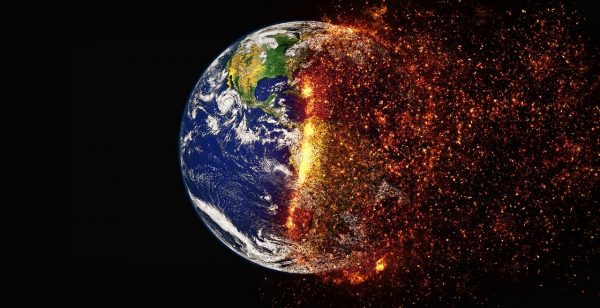
‘Upside-Down Rivers’ of Warm Water Are Carving Antarctica to Pieces
Earth’s frozen places are losing ground fast. In Antarctica, melted ice spills into the ocean at rate of about 155 billion tons (140 billion metric tons) per year — an amount so confoundingly huge that it’s easier just to call it “chilling” and “unprecedented,” as a recent U.N. report did. Those numbers will only increase as humans continue polluting the air with record amounts of heat-trapping greenhouse gases.
https://www.livescience.com/antarctica-ice-shelf-upside-down-rivers.html
Scientists Want to Make a 3D Map of the Entire World Before Climate Change Ruins It
Earth is changing faster than anyone can comprehend. Every day, more forests burn, more glaciers melt and more evidence of the world’s ancient cultures slips away. Change of some kind is, of course, inevitable — but it is happening more quickly and more severely because of the effects of human-caused climate change. And that has some scientists worried: The quicker Earth changes,the less time there is to learn from its past and understand its mysteries.
https://www.livescience.com/map-the-earth-with-lasers.html
Climate Change is Destroying the Cryosphere
More than 100 scientists from 30 countries released a special report examining climate change impacts on the oceans and a less familiar but critically important part of the Earth: the cryosphere. Ice sheets, ice caps and glaciers, the floating sea ice of the polar regions, lake ice, snow on the ground, and permafrost, permanently frozen ground in northern latitudes, all make up the cryosphere.
https://www.livescience.com/what-is-the-cryosphere.html
Endangered Antarctic Glacier Could Soon Calve a Massive New Iceberg
Two cracks are growing in western Antarctica’s Pine Island Glacier, and they are an ominous warning that major ice loss is on the way. This isn’t the first major ice loss in recent years. Nearly a year ago, on Oct. 29, 2018, an iceberg measuring approximately 116 square miles (300 square kilometers) calved from the glacier, less than one month after a large crack appeared.
https://www.livescience.com/cracks-in-pine-island-glacier.html
Ozone Hole Over Antarctica Shrinks to Record-Small Size
The ozone hole above Antarctica, where the sun’s harmful ultraviolet (UV) rays bust through an otherwise sunscreened stratosphere, has shrunk to its smallest size on record going back to 1982, scientists have found. Typically, at this time of year, the hole in the ozone — a layer made up of molecules containing three oxygen atoms — grows to about 8 million square miles (20 million square kilometers), NASA said. That’s bigger than Russia. But unusually warm weather in the Southern Hemisphere means that the hole only extended less than 3.9 million square miles (10 million square kilometers) for most of September until now, according to a statement from NASA.
https://www.livescience.com/ozone-hole-antarctica-smallest-size.html
Majority of North American Birds Face Threat of Extinction
It’s a bird emergency. And we can all be the first responders. Alarming new research by the National Audubon Society finds two-thirds of North American bird species — 389 different species — are at risk of extinction from climate change. Many people were shocked by a recent, independent study that said nearly 3 billion birds have disappeared from the United States and Canada in the past half a century. And, if left unaddressed, Audubon’s new research predicts an even more frightening future.
https://www.cnn.com/2019/10/26/opinions/audubon-birds-danger-of-extinction-climate-change-yarnold/index.html


